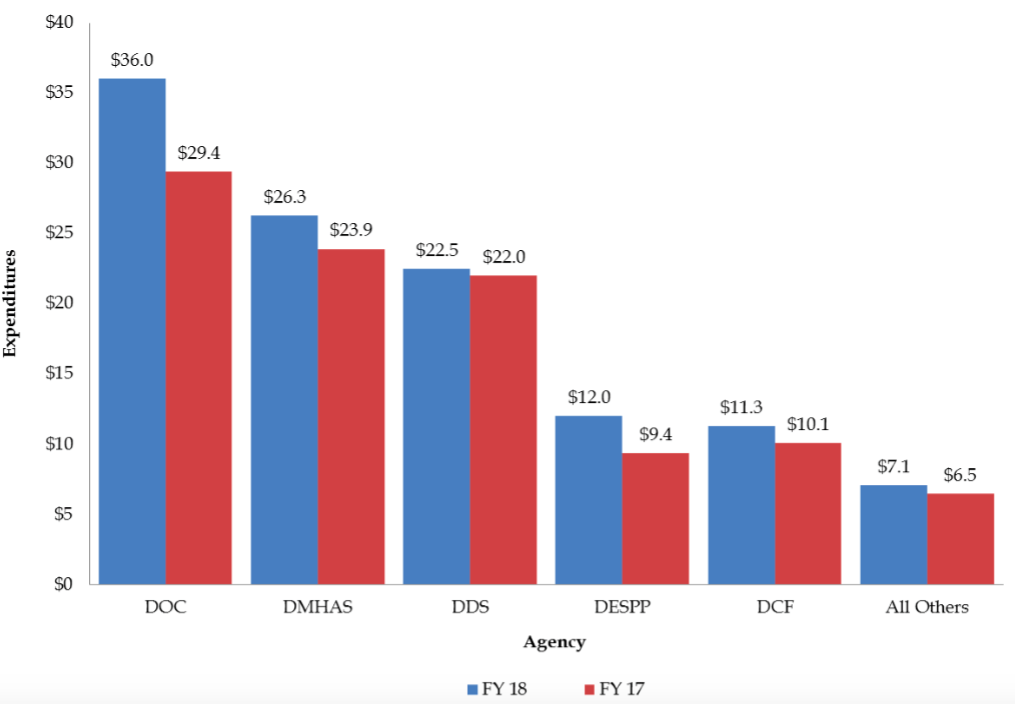Connecticut has spent $13.9 million more in overtime for state employees during the first half of this new fiscal year than it did in 2017, according to a report by the Office of Fiscal Analysis.
Connecticut had been making headway in reducing overtime spending since a high of $256.1 million in 2015. In 2017, Connecticut spent a total of $204.4 million.
But the latest report shows that overtime costs, particularly in the Department of Correction, are trending upwards.

The DOC logged the biggest increase in overtime, costing $6.6 million more than the same period in 2017, an increase of 22 percent.
The Department of Emergency Services and Public Protection also saw a steep increase of 28.3 percent. The Department of Mental Health and Addiction Services, the Department of Children and Families and the Department of Developmental Services all saw modest to significant gains as well.
The Department of Social Services’ overtime payments grew by 62.7 percent, but this only amounted to $672,194.
Gov. Dannel Malloy declared a state hiring freeze in April of 2017 after income tax revenue came in far below projections, leading to the massive $5.3 billion deficit.
Overtime pay has received some increased attention in light of the recent abuse allegations at the state’s Whiting Forensic Hospital, where employees were logging significant amounts of overtime. The extended work hours became an issue during public hearings on the abuse allegations.
One of the nurses had received nearly $70,000 in overtime. All in all, more than 40 Whiting employees were either suspended or arrested in the wake of the scandal, which has likely led to more overtime to fill their shifts.
Massive amounts of overtime have been documented in the past at state facilities like the Southbury Training School, where 615 employees took in $12.3 million in overtime, including one direct care worker who earned more than double his or her base salary in one year.
Officials often point out that overtime can be less expensive than hiring a new employee who will require benefits, however overtime payments in Connecticut are factored into a state employee’s pension.
Connecticut’s state employee pension system is one of the most underfunded in the nation, and the use of overtime to calculate an employee’s pension was the subject of proposed reforms to the state pension system in 2017.
The SEBAC concessions deal negotiated between Malloy and union leaders extended the union benefits contract until 2027, meaning that overtime will continue to be used for pension calculation for at least the next 10 years.
One change was made in the SEBAC agreement, however. New employees will comprise a new Tier IV benefits plan in which overtime payments will be factored in over their entire career, rather than just the 5 highest paid years to help prevent “spiking.”
Also, Tier IV employee overtime can only be included up to 60 percent over base pay when calculating their pension.
Tier II and Tier III state employees — which are the vast majority of state employees — continue to receive full overtime consideration when calculating pension benefits.

